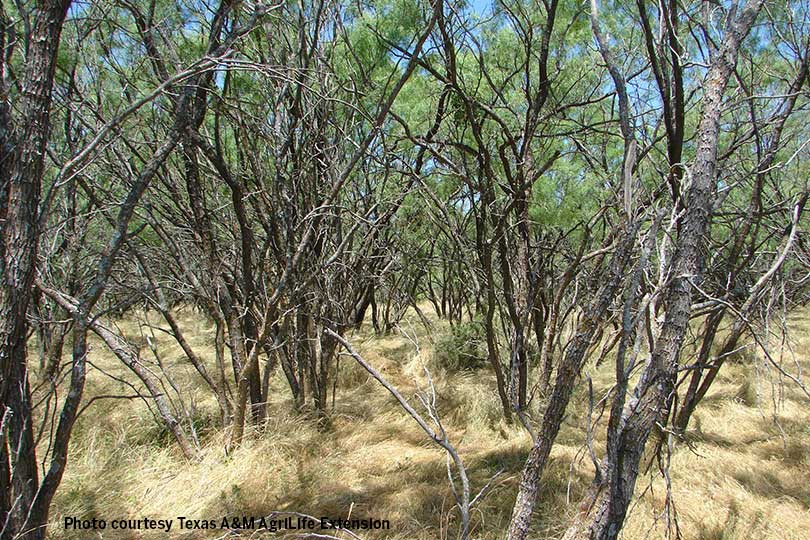By Justin Walker
Communications Specialist
Mesquite-spraying season is approaching and an upcoming webinar could help landowners with mesquite management.
Dr. Bob Lyons, range specialist for Texas A&M AgriLife Extension Service, will be part of the Texas Range Webinar Series on Thursday, May 3, discussing various methods for managing mesquite.
“Spraying season begins when the soil temperature 12-inches deep gets to 75 degrees, and corresponding to that, leaf color with change to a uniform dark green,” Lyons said. “That typically occurs 45 days after bud break.”
Bud breaks happen at different times across the state, Lyons said. South Texas will see them start in February, while the Bryan/College Station area will start mid-March. Northern parts of the state may not see breaks until April.
But colder weather has soil temperatures lower than normal, prolonging the spraying season after bud break.
Soil type also plays a role, as certain soils will warm up faster than others.
“That 45-day rule is okay as a guide, but you can’t go by that number of days,” he said. “You have to really watch them.”
Once the spraying window is open, landowners have a variety of options to manage mesquite. Lyons said the three he primarily sees are leaf spray, stem spray and cut stump.
“If you’re looking at individual plant treatment, leaf spray is the way to go,” he said. “But that method does have a window.”
Stem spray, which usually consists of an herbicide and diesel mixture sprayed all the way around the stem, is best on plants with one to three stems, Lyons said. This method can be used throughout the year, but there is a dip in effectiveness in the fall.
Lyons suggests treating larger mesquites with a higher quantity of stems with a third method, cut stump, due to cost and efficiency.
“Once you get above three stems, your cost of application for stem spray goes up, and your effectiveness goes down,” he said.
Cut stump, which can be done at all times of the year, consists of the landowner cutting the plant close to the ground level and applying an herbicide mixture with diesel to the remaining visible portions of the plant immediately after cutting.
“You want to get the whole cut surface treated and whatever bark that is sticking out of the ground nice and wet,” Lyons said. “You don’t want the mixture running off onto the ground, but you do want to get it covered.”
Lyons believes the cut stump method is effective, but said plants with 10 or more stems may need other methods.
Stem count and soil type are just a few factors a landowner should take into consideration when choosing which control method to use. Density of plants, number of plants per acre and size of plants also impact those decisions.
Cost also influences which method to use. Lyons said, on average, chemicals cost $30 per acre. Application charges can vary depending on the method the landowner chooses.
More information on treatments and costs will be discussed in the webinar, Mesquite and Mixed Brush Herbicide Treatments. Landowners interested in the webinar can access it here. Interested parties can also register to earn CEU credit through the link.
The webinar begins at 12 p.m. Thursday, May 3, with the portal opening 30 minutes prior to start time.

